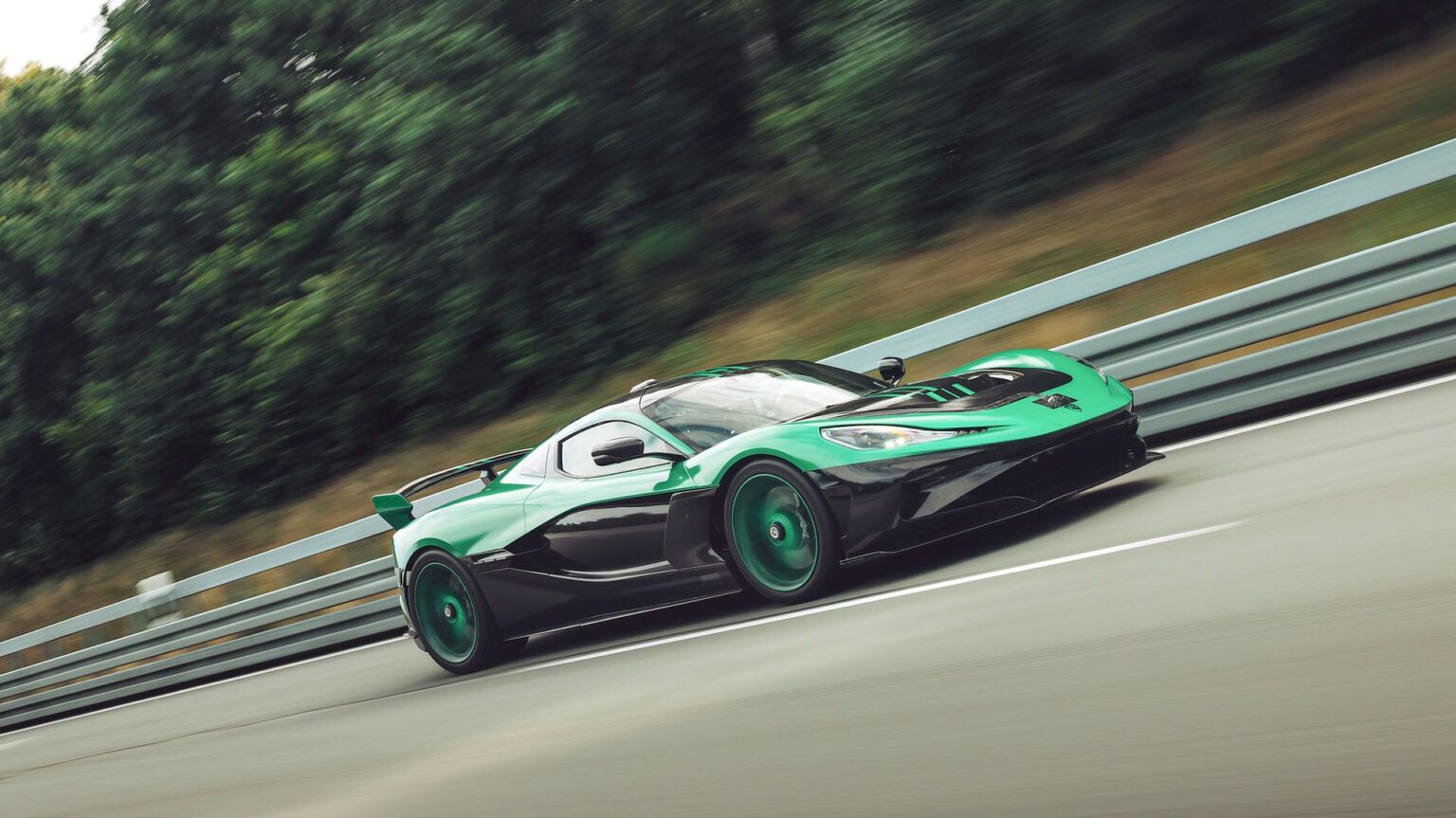In the automotive world, we’ve become familiar with benchmarks of performance. The 0 to 60 MPH time is arguably the most common one, this ability to clock a car’s acceleration from a standstill to highway-cruising speeds. There’s also the quarter mile time, measured in both time and speed. And, in recent years, automakers have taken the habit of bringing their performance cars and SUVs to the famed Nürburgring Nordschleife for bragging rights.
But there’s another, highly exclusive metric for performance, one that only the fastest machines on four wheels can claim to achieve. That’s the prestigious 0 to 400 km/h (249 mph) time, this ability for a jet fighter on wheels to go from stop to its maximum top speed within only seconds. Rimac, the Croatian builder of electric hypercars, not only set a record in that metric a few years ago. It just broke it with its latest Nevera R.
The Rimac Nevera R Hit 0 To 249 To 0 MPH In Under 26 Seconds
Look, all electric vehicles (EVs) are fast, but the Rimac Nevera gives a whole new meaning to that term. Even with the existence of monsters like the Chevrolet Corvette ZR1X or any Koenigsegg, the Nevera reigns supreme in the world of hypercars. And the latest R model just raised that bar.
With a total combined output of 2,107 horsepower thanks to four electric motors, the Nevera R’s acceleration numbers appear to be from an entirely different dimension. For starters, it smashed the regular Nevera’s 0 to 400 km/h (0 to 249 mph) acceleration run by a full 4.14 seconds. It took the car only 25.79 seconds to go from not moving at all, to covering ground faster than some small airplanes. For reference, at full throttle, a Cessna plane has a maximum cruise speed of 230 km/h, or 188 mph. Yeah.
Rimac broke that record at the exact same place where the original Nevera had left it back in 2023, at Germany’s Automotive Testing Papenburg (ATP) facility, which includes a 12.3-km-long (7.5 miles) banked oval track and a 4-km (2.5-mile) long straight. The Nevera R’s numbers were verified and confirmed by the data acquisition company Dewesoft.
Actually, All The Nevera R’s Metrics Are Record-Breaking
But it’s not just the Nevera R’s 0 to 249 mph time that’s incredible. As a matter of fact, the car smashed all the regular Nevera’s previously set records by a good margin. In some cases, like the 0 to 300 km/h (0 to 186 mph) time, it beat the former record by a full three seconds. The car’s top speed was measured by Dewesoft at a mind-boggling 431.45 km/h, or 268.2 mph. Below is the full list of the car’s new benchmarks during its run, compared with the regular car.
2025 Rimac Nevera R Key Performance Benchmarks
|
2025 Rimac Nevera R |
2023 Rimac Nevera |
|
|
0-60 mph |
1.66 Seconds |
1.74 Seconds |
|
0-100 mph |
2.96 Seconds |
3.21 Seconds |
|
0-200 mph |
9.25 Seconds |
10.86 Seconds |
|
Quarter Mile |
7.90 Seconds |
8.25 Seconds |
|
Standing Mile |
19.71 Seconds |
20.59 Seconds |
|
Top Speed |
268.2 MPH |
268.2 MPH |
But it’s not just in straight-line speed and acceleration that the Nevera R broke records. The car proved to be able to shed that speed faster than the regular car. It went from 0-250 MPH and back to zero in a ridiculously quick 26.20 seconds, which is an improvement of a full 5.21 seconds over the normal Nevera.
When we first introduced Nevera, it almost seemed like the pinnacle of hypercar performance had been reached. In a single generation, we had created a performance jump that previously would have taken decades. But now, through relentless innovation, Nevera R goes even faster, while still maintaining much of the comfort and practicality that makes the Nevera a real, usable daily car. Breaking records is in our DNA, and we won’t stop here.
– Rimac founder Mate Rimac
So, there you have it. An electric hypercar just proved its dominance once more in the ultra-high-performance space. And I wouldn’t be surprised if Rimac has other tricks up its sleeve coming our way in the coming years, especially now that it’s partnered up with Bugatti. In case you care, the 2025 Rimac Nevera R is limited to only 40 examples worldwide with a starting price of 2.3 million euros, or about $2.7 million USD. I guess that’s a fair price to pay for owning the fastest production car in the world!
Read the full article here


